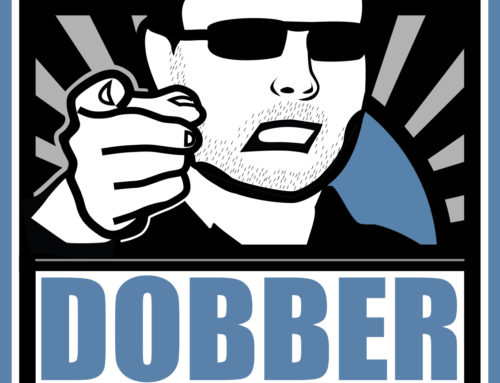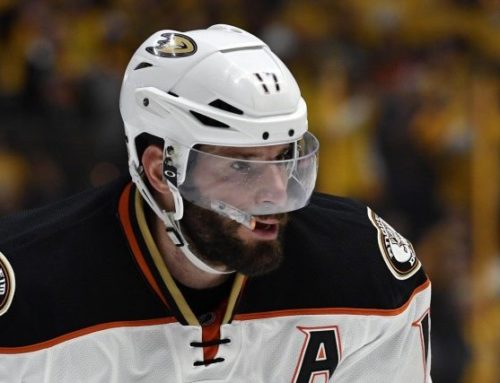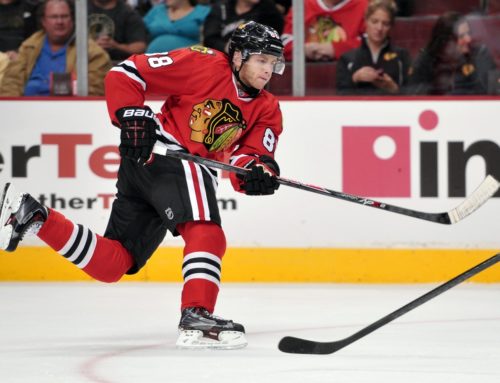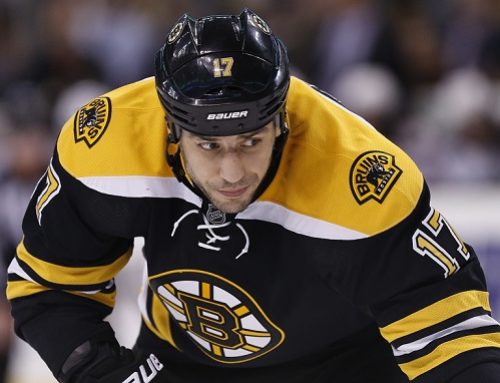
I thoroughly enjoyed putting together the 2007-2008 Prime Cuts squad. To make the team, a player must show something beyond the stat sheet. Similar to TSN broadcaster Pierre McGuire's annual “Monsters Team,” the Prime Cuts squad is chalk-full of intangibles such as heart, determination, hockey IQ, two-way play, grit, and clutch scoring ability. Most of the players on this squad are also under appreciated (in both fantasy and real hockey circles). There are obviously some big stars on this team – the usual suspects – but there are also some under-the-radar players who you may not have noticed this season for whatever reason. (How's that for a rhyme?) Starting today, a section of the team will be released to DobberHockey every few days until the regular season wraps up, when the full roster will be completed.
In 2007-2008 I started the Prime Cuts with a bang, as my first installment contained the top forward line, the top defensive pairing, and the starting goalie. This year, I am going start from the bottom and work my way up. This first piece will contain the backup goaltender, the third defensive pairing, and the fourth forward unit. I was debating whether or not to pick a coach, but I figured that if I did that I may have to alter my selection criteria a bit (however just for the record, Nashville's Barry Trotz would have been my choice).
The Backup: Scott Clemmensen
The backup goalie in the NHL is a position that requires one to possess a combination of door-opening and gum-chewing abilities. It also requires a very unique mental makeup, as backups must sit and watch, but always be mentally and physically ready to step in to any situation (like when a star goalie suffers a serious tendon tear). Is that a strong enough clue?
Scott Clemmensen is my choice to fill the role of backup, for several reasons. Despite a brief one year stint in Toronto , Clemmensen has been within the Devils for over a decade. He has earned his stripes in the AHL, and was handed a huge opportunity earlier this season when Marty Brodeur suffered a torn biceps tendon. However, Clemmensen still had to beat out Kevin Weekes, and deal with the numerous trade rumors that had the Devils receiving a replacement goaltender. Clemmensen stepped in and the Devils didn't skip a beat. He posted an impressive 25 wins in only 40 starts, as well as a sparkling .917 save percentage and a 2.39 goals-against average. When Brodeur was nearing a return to game action, the writing was on the wall for Clemmensen. He was on a two-way contract (unlike fellow goalie Kevin Weekes), so he could be sent down to Lowell at no cost to New Jersey. Lou Lamoriello tried to accommodate Clemmensen, but the goalie market is absolutely dead in the NHL right now. So after posting standout numbers in the NHL for over half a season, Clemmensen accepted his demotion without so much as a peep. The consummate backup.
The Bottom Pairing: Jan Hejda and Matt Greene
The perfect depth defenseman has a few qualities that standout. First and foremost, he possesses an ability to step up and play top-four minutes when called upon. Second, he isn't flashy enough to command a lot of money. In the cap era, depth players must come cheap, or they bring little value to an organization. My selections for this pairing are both players who do not play on the bottom pairing, but are underrated top-four guys who fall just below the cusp of known defensemen. The first defenseman is Jan Hejda from Columbus. Hejda is one of the most dependable defensemen in the league. On the Blue Jackets, he is third in ice-time, behind Fedor Tyutin and Mike Commodore. He is first on the team with a massive plus-20 (Derrick Brassard is second at plus-12). He earns a (relatively) measly $2 million per season. The Edmonton Oilers missed the boat by not bringing back Hejda, who provides an element of reliability that they are lacking right now. He sees four minutes per game on the penalty kill, and only 14 seconds per game on the power play. Hejda brings dependability, strong positional play, and an ability to eat tough minutes to the Prime Cuts squad.
Hejda's partner on the bottom pairing is also a former Oiler. Matt Greene has bled purple and black (and sometimes red) all season for the upstart Kings. He is a respectable minus-1 (only veteran Sean O'Donnell is above him on the Los Angeles blue line), and he plays three minutes a night on the penalty kill (again, only being surpassed by O'Donnell. Maybe I picked the wrong King…). Greene was always thought of as a physical player with Edmonton, but due to his poor mobility he was a defensive liability. He still isn't the swiftest skater, but he has found a nice niche with the Kings, and they rewarded him with a monster contract (five years, $14.55 million total) last season. With so much young offensive talent in the pipeline (Drew Doughty, Jack Johnson, and Thomas Hickey, to name a few), Greene's ability to defend, block shots, and paste opposing forwards will always be needed in Los Angeles.
The Fourth Line: Cody McLeod, Jay McClement, and Cal Clutterbuck.
The fourth unit of any successful team must be able to consistently provide a spark to the team. A timely goal, a huge penalty kill, a big hit, or just a strong shift by a fourth line can often turn the tide in a game. Cody McLeod has been doing all of the above for the listless Avalanche this season. He has a very respectable 14 goals (good for a three-way tie for third with Wojtek Wolski and Marek Svatos), while averaging around 10 minutes of ice time per game. He leads the Avalanche in hits with 166 (a stat I do not put much stock in because of the incredible variances from arena-to-arena), and penalty minutes with 146. He has decent hands and works hard enough that he projects out to be a consistent 15-20 goal energy winger with lots of bite to his game.
Jay McClement has developed quite nicely this season in St. Louis. The Blues possess so much young talent up front that McClement looked like he was going to be forced out of the lineup, but he has earned a regular spot on the checking line thanks to his tireless defensive presence and dominant face-off ability (52.6 percent on the draws). Like McLeod, he has a respectable goal total for an energy player (12). He also averages over one minute more on the penalty kill per game (3:49) than any other St. Louis forward (Yan Stastny with 2:34). Most importantly, McClement has allowed the Blues to be patient with Patrik Berglund (who sees over 20 minutes of ice time per game and only 19 seconds of it on the penalty kill). McClement's selfless, understated game is common around the league, and there are a half-dozen or so other players that would have filled this role nicely (Marty Reasoner in Atlanta, David Steckel in Washington, Colin Fraser in Chicago, and so on), but this season McClement has been a standout without standing out for the Blues.
With a whopping 302 hits to date, Cal Clutterbuck has certainly made a name for himself in his first full season with the Minnesota Wild. He has been punched, slashed, and whacked countless times due to his hard hits (all of which are clean). He plays around 12 minutes a game, which is more than enough time for him to make his presence felt. Just typing his name on YouTube brings up an array of bone-jarring hits. Clutterbuck doesn't pick his spots and with eight goals (and counting), has shown he can do more than skate around and hit. Clutterbuck is the quintessential fourth-liner. Not a liability, able to draw penalties, and able to make his presence felt in a limited amount of time. The goals on top of that are just a bonus.





 EDM
EDM FLA
FLA CHI
CHI ANA
ANA L.A
L.A BOS
BOS
